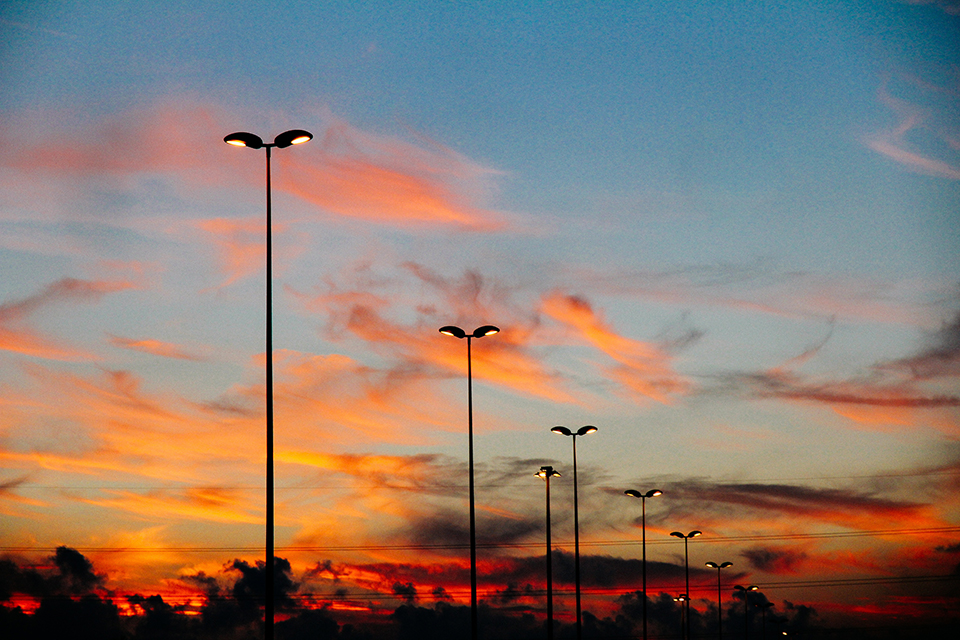
In the vast, sun-drenched landscapes of Australia, a revolution is quietly taking place. As the world grapples with an urgent need for sustainable and renewable energy, Australia is leading the charge, and the emblem of this change is none other than solar street lighting. Their popularity has sparked a furore of interest, transforming the way Australia lights up its streets and public spaces.
A Brief History
Solar street lighting in Australia is not a new concept, with early examples seen as far back as the 1970s. However, they were initially plagued by high costs and relatively low efficiency. The technology took several decades to mature, with substantial advancements in photovoltaic (PV) cells and battery storage solutions contributing to the widespread adoption we see today.
By the early 2000s, the first generation of commercially viable solar street lights began to appear in remote and off-grid locations, where their independence from electrical grids made them an attractive solution. However, it wasn’t until the late 2010s, with the advent of more efficient solar panels, brighter LED bulbs, and improved battery technology, that solar street lights began to make a substantial mark on the Australian landscape (2).
What are Solar Street Lights and How Do They Work?
Solar street lights are standalone, self-sustaining outdoor lighting systems that capture sunlight and convert it into electricity to power light-emitting diode (LED) bulbs. The typical components of a solar street light include a solar panel, a battery, a light source (usually LEDs), and a controller that manages the charging and discharging of the battery (3).
The process begins with the solar panel absorbing sunlight during the day. This sunlight is then converted into direct current (DC) electricity, which charges a battery. The controller ensures that the battery does not overcharge during the day and that it does not discharge excessively during the night, which could potentially damage the battery.
When the sun sets, the controller detects the low levels of light and activates the LEDs, which draw power from the battery. This cycle repeats daily, providing a sustainable and renewable source of lighting that requires minimal maintenance and no electrical grid connection (3).
The Future of Solar Street Lighting in Australia
Australia is an ideal location for solar street lights due to its high levels of sunlight year-round. In addition, as cities grow, the need for more sustainable, cost-effective, and environmentally friendly lighting solutions increases, driving a need for solar street lighting. They not only reduce the dependence on conventional power sources but also help in reducing carbon emissions, contributing to the fight against climate change.
Moreover, the technological advancements in solar street lighting promise even more efficiency and effectiveness in the future. For instance, advancements in battery technology are expected to offer greater energy storage capacity, allowing the lights to function for longer periods, even on cloudy days or during the winter season.
Similarly, the emergence of smart solar street lights, with features such as motion sensors, dimming capabilities, and remote management, offers a glimpse into the future of solar street lighting in Australia. These ‘smart’ lights can automatically adjust their brightness based on the presence or absence of people, saving energy, and prolonging their operational life (4).
Given Australia’s commitment to renewable energy and its abundant sunlight, it is expected that the demand for solar street lights will continue to surge. The interest is not only indicative of a shift towards sustainable energy but also a testament to Australia’s role as a leader in renewable energy adoption.
Looking forward, advancements in technology are set to further improve the efficiency, resilience, and intelligence of solar street lights. Efforts are being made towards the integration of Artificial Intelligence and Internet of Things technology to make solar street lighting systems more responsive, customizable, and efficient (5).
With the continued support from the Australian government for renewable energy projects, and initiatives like the Smart Cities and Suburbs Program, the adoption of solar street lighting is expected to grow exponentially (6). These initiatives aim to make cities and suburbs smarter, more sustainable, and liveable by supporting the rollout of innovative, technology-driven infrastructure such as solar street lights.
However, while the furore continues, it’s important that stakeholders, from government bodies to manufacturers, ensure that the deployment of solar street lights is done in a way that is inclusive and accessible to all, considering the unique needs of different communities and environments across the diverse Australian landscape.
Ultimately, solar street lighting is not just about illuminating our streets. It’s about a sustainable, green future that benefits all Australians – a future where our cities and towns are lit by the clean, renewable power of the sun.
With each solar street light that illuminates the vast Australian nightscape, we’re not just witnessing the transformation of public lighting – we’re watching the dawn of a new era in sustainable energy use, and Australia is leading the way.
References
(1) The history of solar street lights. https://www.linkedin.com/pulse/history-solar-street-lights-daisy-tang/
(2) Solar Powered Street Lights for Municipalities. Sunna Design. https://www.sunna-design.com/solar-power-street-lightings-for-municipalities/
(3) How Do Solar LED Street Lights Work? ECO Sources Solar Technology Co. Ltd. https://www.ecosourcesolar.com/how-do-solar-led-street-lights-work/
(4) Smart Solar Street Lights: Benefits and Advantages. EnGoPlanet. https://www.engoplanet.com/post/2018/10/07/smart-solar-street-lights-benefits-and-advantages
(5) The Future of Street Lighting. The Role of Smart Technology. Enlighten. https://www.enlighten.com/blog/future-street-lighting-role-smart-technology
(6) Smart Cities and Suburbs Program. Department of Infrastructure, Transport, Regional Development and Communications, Australia. https://www.infrastructure.gov.au/cities/smart-cities/suburbs-program.aspx
Interesting Related Article: “Switching To Solar Energy: Is It A Smart Financial Move For Your Business? “
